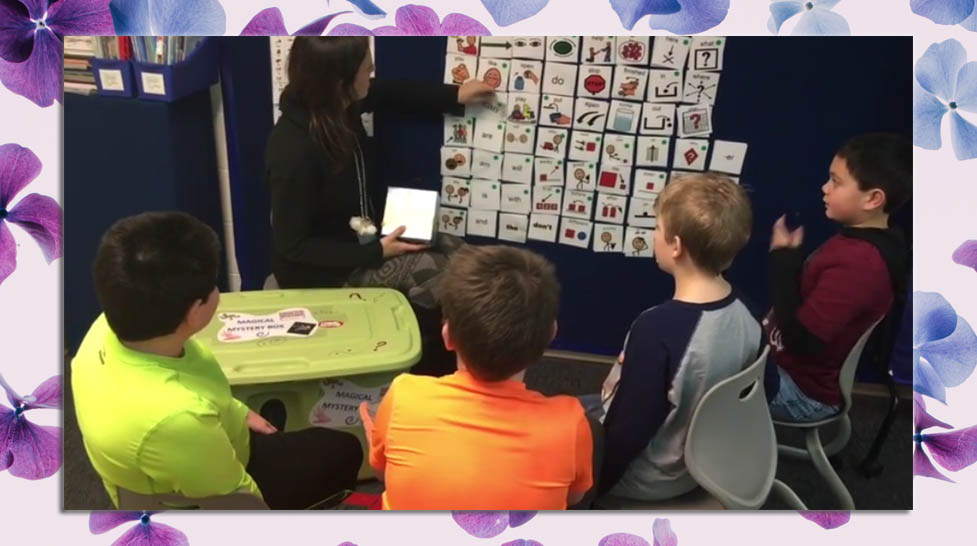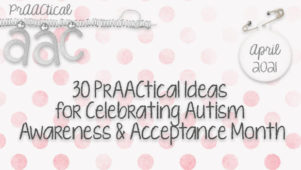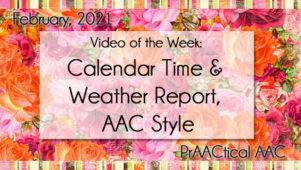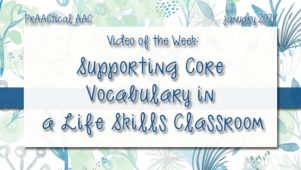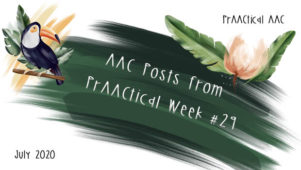PrAACtical Teaching in the Autism Classroom: Instructional Activities for Core Vocabulary
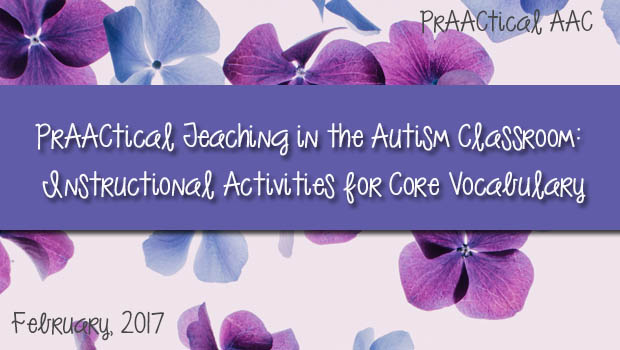
“But I don’t have just one student who needs AAC in my class – I have a bunch! How can I work AAC teaching into an already hectic day?” Teachers Amy Devin and  Lauren Pawlowski are back with real-world suggestions for situations like these. Last year, they introduced us to Big Core, gave us tips for implementing it in the classroom, and explained how they integrate it into shared reading lessons and predictable chart writing activities. Today, they’re back with prAACtical information on how they provide explicit instruction on core vocabulary words.
Lauren Pawlowski are back with real-world suggestions for situations like these. Last year, they introduced us to Big Core, gave us tips for implementing it in the classroom, and explained how they integrate it into shared reading lessons and predictable chart writing activities. Today, they’re back with prAACtical information on how they provide explicit instruction on core vocabulary words.
Amy and Lauren are public school teachers in Michigan who began teaching in resource rooms and moved to self‐contained ASD elementary classrooms in 2009. There was not much talk about core language when they started teaching and even less about incorporating into classroom lessons. AAC devices have changed a bit over the years, too. Initially, they worked with a 32-location core board on a digitized speech device . They now use a 64-location core vocabulary array on a manual communication board, large instructional core boards, and individual AAC devices. They are passionate teachers and believe that they can help every child to read, write and communicate.
Don’t miss the video showing their ideas in AACtion!
Core Word Instruction
By now, we hope that you have your Big Core up in your room , have been modeling diligently throughout the day and have focused on Shared Reading. The next step in the process is to do direct instruction on the core words. Sometimes this can seem challenging since the words are used so frequently in a classroom, but are difficult to understand for our beginning communicators. We want to share with you some of the tricks we have learned along the way, as well as let you see a video of how we “introduce” or focus on a specific word from the core language board.
- Pick a word. Once we have determined with our team what words we are going to focus on, we brainstorm different ways of using the core word. It is important that we are not creating rigid communicators, but in fact creating flexible communicators that can use words in multiple ways for multiple functions. In the video, we focused on the word “open.” We sat and came up with an extensive list of different ways to use the word (open a bag, open a door, open your eyes, open your mouth, open a book, open a box, open your mind, etc). After an extensive list is made, think of your students and what they would most connect with.
- Get some props! You want your students to be very engaged in your lesson. Hands-on learning is a great way to give students experience with the word and not just a lecture on how to use language. We all learn by doing. In the video the props we used were sprinkles, a puzzle, a house, pop, and the students own hands and mouth. As you can see in the video, they all are interested in the various uses of the way the word was modeled.
- Be flexible with comments and phrases. Be sure to instruct the word with comments, questions, requests, and __________. It is easy to get stuck in the rut of teaching one phrase until you are blue in the face. Then your students will use the one phrase they were taught. This is not teaching them how to use the words, yet it is teaching them how to memorize a phrase. Again, we want flexible communicators that are not just using the same phrase or statement to request things. They need to see that it can be used in many different ways.
- Connect it to a text. Google it! We always look up the word we are instructing on to find a book title or book that will pull it all together. These are core words that we are teaching, so odds are there are a multitude of books you can find in your library or classroom. If you cannot find one, make one! In the video, we used a book that we made on TarHeelReader several years ago. It still worked great for our students. If you end up making a book, do it with your students there. They loved to be involved and will have ownerships to it.
- Do not expect mastery. As you all know, just because you instruct this word in a lesson, it does not mean our students will understand it right away. Continue to model the use of the word and other core words. We have the students for up to 6 years in a row and they have had experience, modeling, and instruction with all of the words numerous amounts of times. Language is hard for our kids. They need practice, a lot of practice. Be sure to do a lot of repetition with variety.
It can seem daunting to come up with this for each word, but it really does get easier with time and experience. It is also beneficial to have a partner in crime that you can bounce ideas off of. Join forces with your teacher, speech path, OT, or even parents. We hope you have fun with instructing core words to your students!
Filed under: Featured Posts, PrAACtical Thinking
Tagged With: ASD, classroom, core word, implementation ideas
This post was written by Carole Zangari
